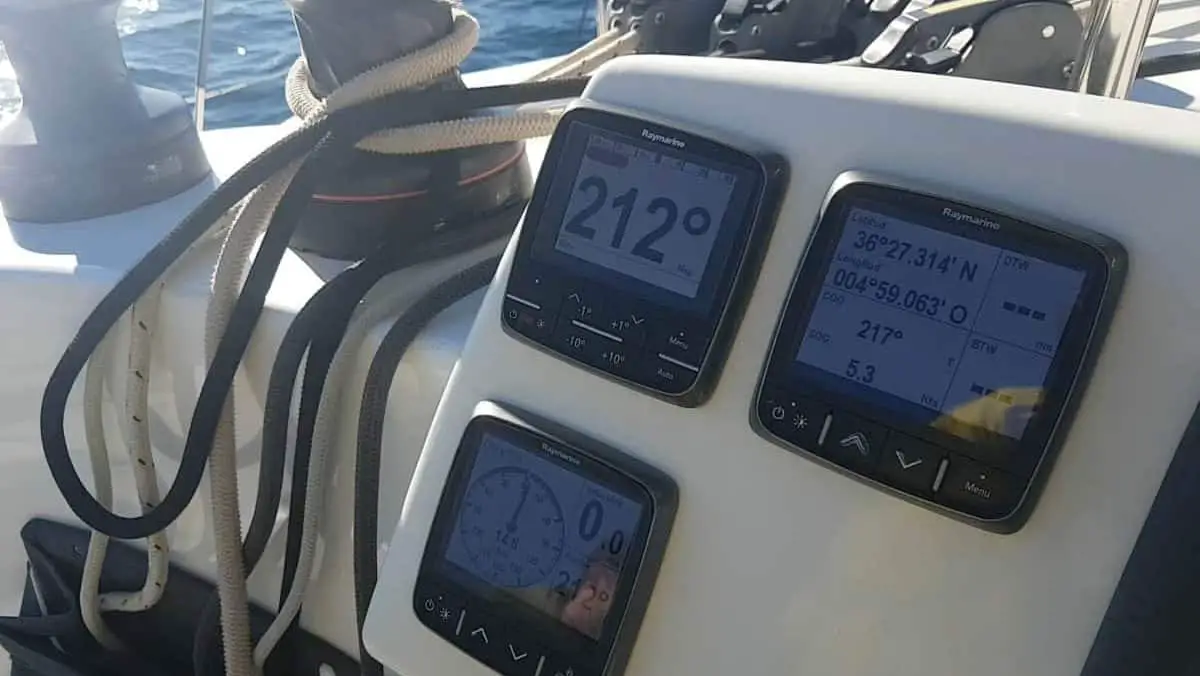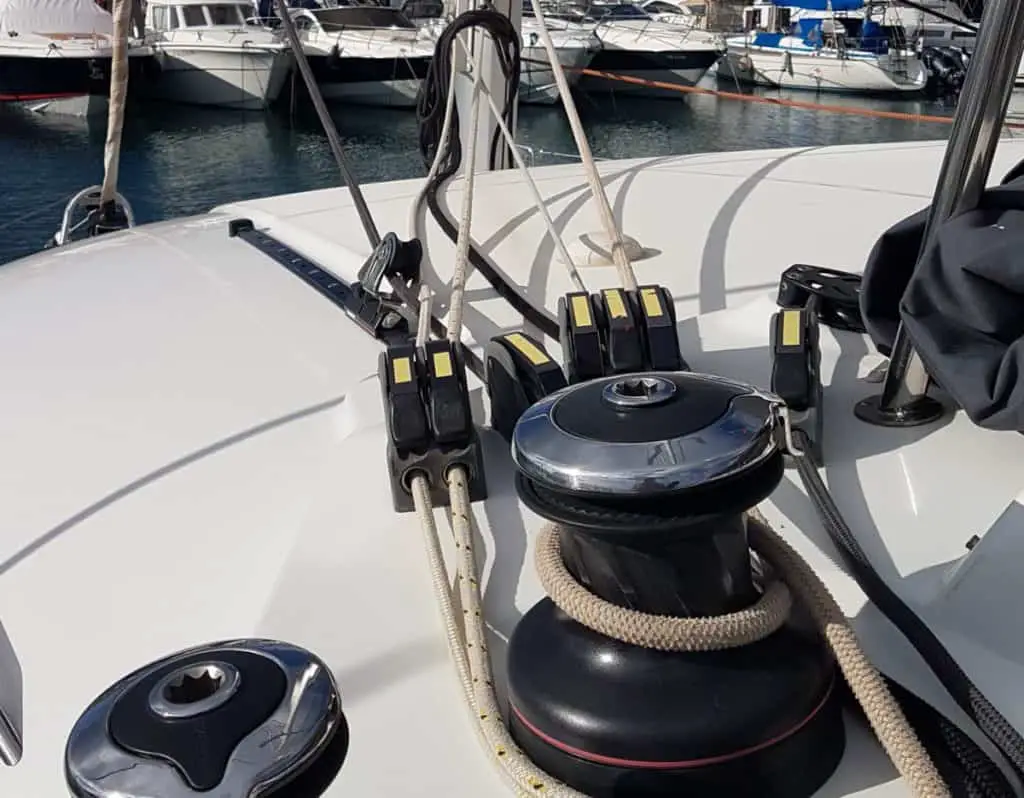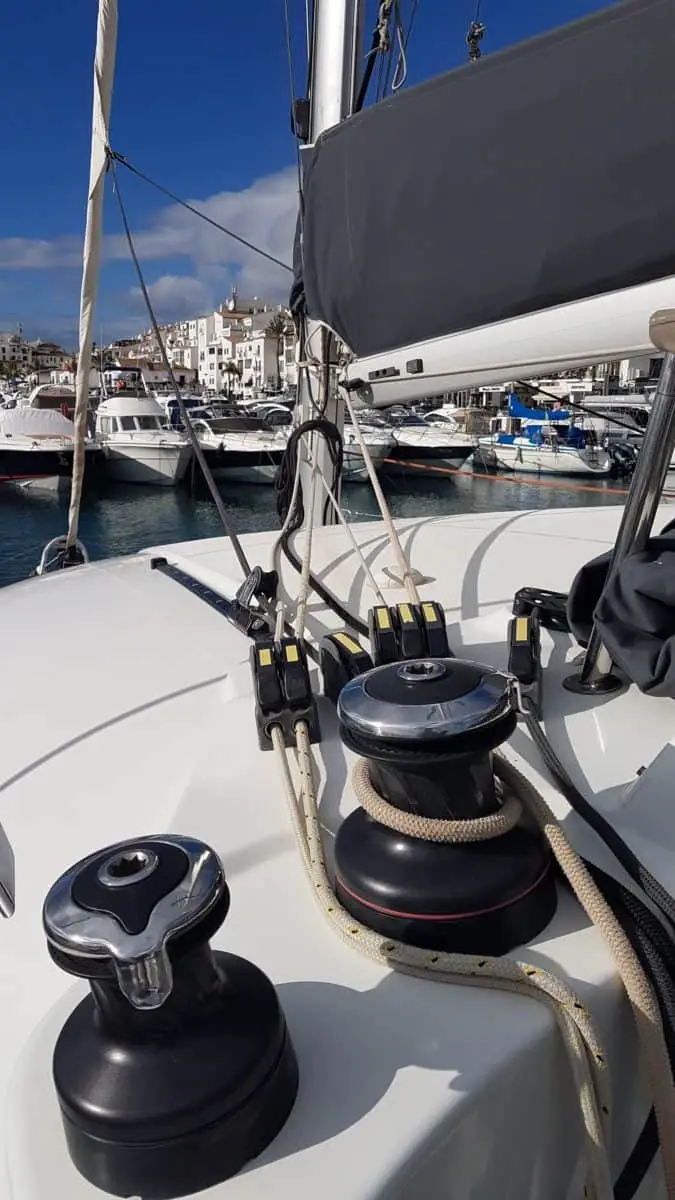As an Amazon Associate, we earn from qualifying purchases. We may also earn commissions if you purchase products from other retailers after clicking on a link from our site.
Sailing is an exhilarating experience, and one thing that gets me the most passionate is teamwork and seeing everyone doing the correct things at the correct time. Although I love teamwork, I find sailors that take their boat out on their own, amazing and very inspiring.
This has led me to ask the question: What is the largest catamaran one person can sail on their own (solo sailing)? I started a poll and collected data from over 100 sailors, and here you have it! This is how big of a catamaran people can safely sail single-handed.
| How big of a catamaran can one person SAFELY sail? | Votes | % |
| 30-40ft | 47 | 46% |
| 40-50ft | 34 | 33% |
| Size doesn´t matter (But gear, skills, etc. does) | 20 | 19% |
| 50-60ft | 1 | 0.9% |
| 60-70ft | 0 | – |
| Total respondents | 102 | 100% |
Keep reading to understand which factors make a boat more or less suited for short-handed sailing.
Conclusion of The Study
Most people (46%) who took the poll answered that they would not be comfortable sailing a catamaran larger than 40 ft safely. This is also the same size that I recommended in my video on best on the best-sized catamaran for ocean sailing, which you can watch below or read this article.
Many commented that larger boats, and the sails would be difficult to reef efficiently and safely and also that their view would be hindered, making docking and port navigation much harder.
33% of the responders said that they would be comfortable with a boat a big as 50ft before the size started becoming a problem; most of this group also mentioned that they are sailors with a lot of experience and many years in the industry. Some argued that navigating offshore is very easy, but the difficulty mainly lies in stormy weather, where most would appreciate a helping hand.
19% responded that they would handle any boat as long as it was set up correctly and they were taught the right skills. This, of course, makes sense in an imaginative world where it is possible to outfit any boat with the most recent automatic equipment and train anyone to the highest level. Respecting this answer, I have put a section further below discussing the technical aspects of solo sailing.
Above 50ft in length, very few (1 respondent) felt comfortable sailing safely independently.
Why Size Does Not Matter
Considering the 20% that answer size doesnt matter, let’s look at what they thought did matter. Skills and Gear
Skills
There is no better enabler than actually knowing what you are doing; if you lack the skills, you will probably end up in a bad way no matter what gear you have.
The skills that were mentioned surrounded mainly the ability to handle rough weather and to dock and navigate a marina safely. Long calm passages under autopilot seemed to be very easy.
Bow thruster and High Tech gear
Solo sailing a large catamaran means you will have to leave some work to computers and machinery, which includes hoisting and reefing sails by electric winches. On some exclusive cats, it will also do the trimming of the sails for you.
Most people will never sail a boat with automatic trimming due to it being very expensive; electric winches, on the other hand, are common on 38ft+ cats.
One of the most nervous aspects of sailing is docking, this is where many accidents happen, and this is where it becomes very tricky if you are on your own. Bow thrusters (impellers that can move the boat sideways) activated by the move of a joystick make docking much easier, sadly it is a costly system that very few cats employ.
The assumption is that if you are properly trained and have enough money to buy allt the gear in the industry, you can safely sail any size vessel. This is not the reality for most people, so let’s look at most respondents’ experiences.

Limiting Factors
The limiting factors are the things that make it hard to solo sail your boat; anything that makes it less safe and manageable will be on this list. Let’s check it out!
Heavy sails
Once the cat gets longer, the larger the sails’ surface area will be, and therefore also their weight; this means that unless you are on an electric winch system, getting your sails up might be very hard or impossible. This problem usually starts around 45ft. Getting physically prepared is necessary for safe sailing.
Limited view
Once you pass 40ft, many people mentioned the problems of seeing what’s in front of you; on some cats, this is not a problem at all, especially with flybridge, but on most small movement in a marina can get really tricky.
It’s common to the sensation you get when you are used to driving your mom’s fiat, and then you get back into your truck. It’s hard to know where the car or boat actually is.
Time to move from cockpit to cleats
Another aspect is simply the time it takes, from changing the engine settings to attaching your boat to a cleat. The longer the boat is, the longer time it takes you to move from one to the other when you need to make corrections.
And if you are unlucky, it will take just a little bit too long, and you scratch your neighbor’s boat. Something that is not too uncommon.
Setting Up Yourself and Your Boat For Solo Sailing

Boat setup
Here are some essential tips for setting up your boat for solo adventures; if you want the complete guide, I would recommend you read this.
- Ensure all controls go to the cockpit; this is vital for safe cruising since it eliminates the need to move around the boat to access various controls.
- Use a center cleat for docking; this really is a pro tip that will make life so much easier. The center cleat makes attaching the lines much more accessible and will make it possible to “spring of the dock,” a maneuver that solo sailors love since it allows them to use a single line to untie from the dock. Something that the captain can do from the cockpit.
- Use an autopilot. This is probably one of the most useful tools since it allows you to multitask while at sea. Instead of always being on watch and steering the boat, you are now able to pop your head up from time to time and use the rest of the time for cooking, repair, or get some rest!
Practice sailing solo
The respondents’ most important factor was skills; the list below tries to summarize the data and help you take the next step towards your solo sailing adventure.
- Bring a crew but let them be passive; if something happens, they will be there for you to solve the situation, but until then, you are on your own. This will create a safe learning situation where you are able to see where your skill level is at and to become better and better in a safe way. This is especially useful when docking!
- Dry practice before you go out; walk through different situations in your head and then do it in the safety of the dock. This is a potent skill that will increase your learning curve, and once you get out on the water, you already know most of the moves you need to do, where the different lines as, etc.
Check out this article on Short-Handed sailing of catamarans
Thanks for reading, and I hope you like this type of data collection and analysis useful! Safe Sails!

